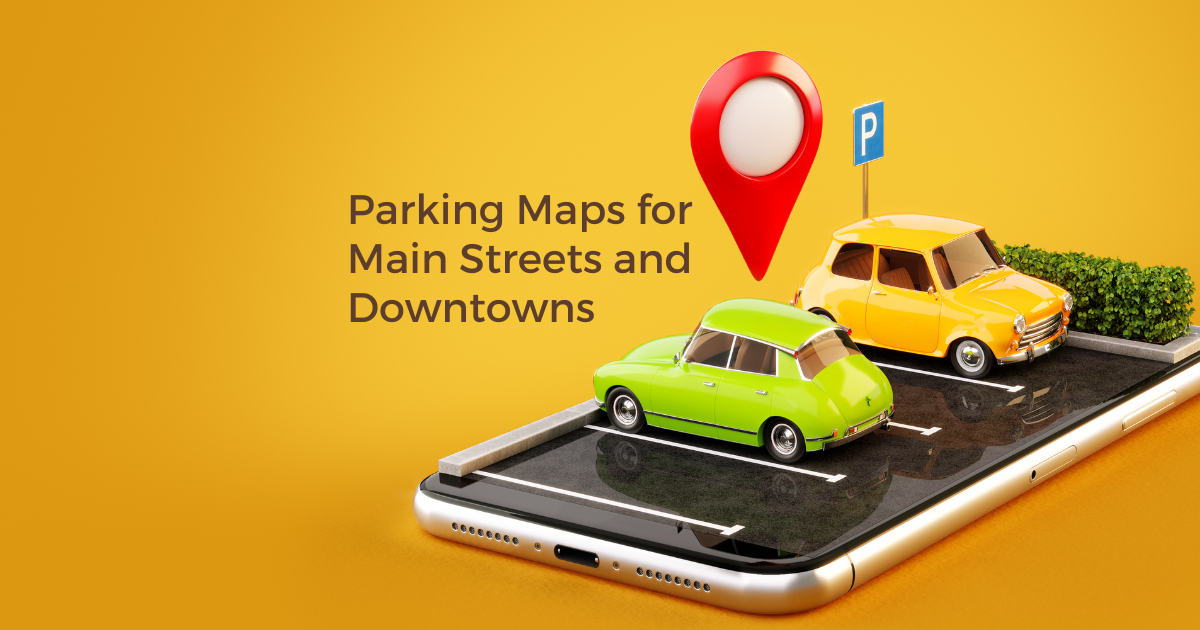
If the only map you can think of is the crumpled roadmap in your car’s glove box, think again! Maps aren’t just useful for navigating; they have a broad range of applications. Different types of maps have different uses. They provide information relevant to various applicants and disciplines. Let’s dive in and explore the most common types of maps and their uses!
General Reference Maps
“General reference maps” is a broad category that includes many types of maps that can be used on a casual, referential basis. Whether this is on-the-go navigating or looking up information at home, these maps don’t require specialist knowledge to understand.
Examples of General Reference Maps
- Topographic maps
- Political maps
- Physical maps
Uses of General Reference Maps
- Navigation
- Geographic analysis
- Education
- Emergency management
Differences With Other Types Of Maps
- Offer a very broad overview of an area
- Do not cater to specific navigation needs
- Little specialist information available
- Widely used and easily understood
Topographical Maps

Topographical maps depict physical features, showing elevation through contour lines. They are great for getting detailed information about the landscape, making them useful for navigation, surveying, and outdoor activities like hiking and backpacking.
Examples of Topographical Maps
- Contour maps
- Shaded relief maps
- Planimetric maps
Uses of Topographical Maps
- Hiking
- Land surveying
- Urban planning
- Geographical research
Differences With Other Types Of Maps
- Focus on terrain and elevation
- Contour lines indicate relief
- Provide detailed physical feature information
- Show natural landscape, not political/thematic information
Primary Symbols Used in Topographical Maps
- Contour lines: elevation and relief
- Index contour lines: specific elevation
- Spot elevation: exact elevation at a point
- Hachure marks: depressions and sinkholes
- Slope arrows: direction and steepness of slopes
Thematic Maps

Thematic maps focus on representing specific themes, such as population, climate, or economic indicators. They use color, symbols, patterns, and other visual techniques. These maps provide a way to see patterns and relationships to a particular subject.
Examples of Thematic Maps
- Population density map
- Climate map
- Soil fertility map
- Crime rate map
- Economic development map
- Electoral map
Types of Thematic Maps
- Choropleth
- Isopleth
- Dot Density
- Flow Maps
- Heat Maps
Uses of Thematic Maps
- Visualizing and analyzing data patterns
- Identifying spatial relationships
- Supporting decision-making processes
- Communicating complex information
Differences With Other Types Of Maps
- Focuses on specific data or themes instead of an overview
- Uses colors, symbols, and patterns to represent data instead of cartographic elements
- Less attention to specific geographic features
- Not used for navigation
- Conveys information related to a specific subject
Navigational Charts

Navigational charts are specialized maps designed for safe and efficient navigation in maritime or aviation environments. They provide essential information about water depths, coastal features, navigation aids, and hazards to ensure the safety of vessels and aircraft alike. These charts require specialist knowledge to understand.
Examples of Navigational Charts
- Nautical charts
- Aeronautic charts
Uses of Navigational Charts
- Ensuring safe navigation and avoiding hazards
- Determining optimal routes and distances
- Identifying navigational aids and landmarks
- Planning maritime or aviation operations
Differences With Other Types Of Maps
- Specific to water or air navigation
- Detailed information on specific features of water and airspace, not broader geography
- Used for navigation and safety– not education, research, or general knowledge
- Require specific training to use
Cadastral Maps and Plans

If you want to buy property, you need to look at a cadastral map! These maps are detailed land records that show you where property boundaries are, ownership, and other land parcel information. These maps are frequently used as legal and administrative tools.
Examples of Cadastral Maps and Plans
- Property boundary maps
- Land parcel maps
- Land registry plans
- Land subdivision plans
Uses of Cadastral Maps and Plans
- Land ownership registration and documentation
- Property taxation and assessment
- Land-use planning and zoning
- Real estate transactions and development projects
Special Use in Surveys and Land Management
- Establishing and defining property boundaries
- Resolving land disputes and legal issues
- Land valuation and assessment
- Facilitating land administration and management
Differences With Other Types Of Maps
- Focuses specifically on land ownership and property boundaries, not broad geography
- Has legal and administrative significance in land management
- Used mainly surveying, land administration, and real estate
Political Maps

If you’re looking for information about boundaries and the locations of towns and cities, you want a political map. These maps represent boundaries and divisions of everything from countries to cities. They focus on depicting political and governmental organization.
Examples of Political Maps
- World map with country boundaries
- Map of a country with state or province boundaries
- Map of a city with district or ward boundaries
Uses of Political Maps
- Understanding political divisions and boundaries
- Analyzing voting patterns and electoral districts
- Studying geopolitical relationships and conflicts
- Making administrative decisions
Types of Information Included in Political Maps
- Borders
- Capitals
- Major Cities
- Administrative Divisions
- Counties
- Districts
Differences With Other Types Of Maps
- Emphasizes administrative divisions, not geography
- Political maps highlight political boundaries, which may be geographic (like rivers) or artificially drawn
- Political maps are crucial for understanding political organization
Road Maps

If you’re planning a road trip, you want a road map. Road maps provide detailed information about road networks. Make sure you only use up to date road maps, since small rural routes and streets can be hard to navigate.
Examples of Road Maps
- Highway maps
- City street maps
- Road atlases covering a larger geographic area
Uses of Road Maps
- Navigation during road trips and daily commuting
- Trip planning
- Finding alternate routes
Special Uses for Navigation and Trip Planning
- Route planning for efficient travel
- Locating points of interest and amenities along the way
- Determining travel time
- Identifying road names, exits, and intersections
- Avoiding traffic congestion or road closures
Differences With Other Types of Maps
- Focuses specifically on road networks
- Provides detailed information on highways and streets, not geography or climate
- Mainly used for navigation and trip planning, can play a role in education and analysis
Climate Maps

Climate maps visually represent the spatial distribution of climatic conditions. Basically, they let you know what the weather and climate conditions are like in specific regions. Climate maps help you predict what climate patterns will be in an area.
Examples of Climate Maps
- Temperature map
- Precipitation map
- Growing season map
- Köppen climate classification map
Uses of Climate Maps
- Understanding regional climate patterns and variations
- Assessing an area’s growing season and habitat potential
- Climate change research
- Urban planning and infrastructure development
Information Included in Climate Maps
- Temperature
- Precipitation
- Wind Patterns
- Climate zones
- Growing seasons
- Aridity index
- Moisture index
Differences With Other Types of Maps
- Focuses specifically on climatic variables and may include some geography
- Show distribution and patterns of climate elements, not manmade structures
- Useful for education and analysis, not navigation
- Provides insight into long-term patterns, not short-term conditions
Geologic Maps

Geologic maps tell you not just about what’s on the Earth’s surface, but what’s under it. These maps depict the distribution, composition, and structure of rocks, minerals, and other geological features in a specific area.
Examples of Geologic Maps
- Bedrock geologic map
- Structural geologic map
- Surficial geologic map
- Mineral resource map
Uses of Geologic Maps
- Identifying natural resources such as minerals, water, and fossil fuels
- Geological hazard assessment, including landslides and earthquakes
- Geological research and education
- Environmental management and land-use planning
Information Included in Geologic Maps
- Rock types
- Faults
- Folds
- Mineral Resources
- Elevation
- Stratigraphic layers and their ages
Differences With Other Types of Maps
- Focuses on depicting geological features and formations, not necessarily political boundaries or urban data
- Provides insights into the Earth’s composition and structure
- Uses specific symbols and colors to represent different rock types and geological units
Interactive Maps
The odds are good that the map you interact with the most frequently is an interactive map. Interactive maps are digital maps that allow users to actively engage with and manipulate the displayed information. They offer features like zooming, panning, and clickable elements, and are frequently used in an app for navigating in the car.
Examples of Interactive Maps
- Online mapping platforms like Google Maps and Proxi.co
- Real-time traffic maps
- Interactive campus maps
- Map applications for smartphones or tablets
Uses of Interactive Maps
- Navigation and route planning
- Locating points of interest and businesses
- Visualizing and analyzing spatial data
- Overlaying thematic data on other navigational types of map
- Supporting education and exploration
Differences With Other Types of Maps
- Always digital
- Provide real-time or up-to-date information
- Dynamic features like zooming, panning, and data overlays
Why Understand The Types of Maps?
As you can see, there are many types of maps, each designed for a specific purpose. Whether you’re planning a road trip or studying geology, there is a map that will provide the information you need. Understanding the different types of maps can unlock new parts of the world around you.
Related Articles
Get Inspired
View All Featured MapsAdventure Awaits!
Check out some of the latest articles on our blog





.png)
